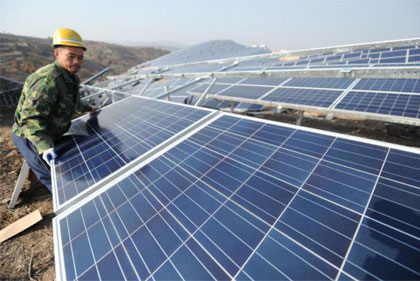The term solar PV (photovoltaic) refers to an array of cells (PV devices) containing a solar photovoltaic material that converts solar radiation into direct current electricity. These devices generate electricity directly from sunlight via an electronic process that occurs naturally in certain types of material, called semiconductors. Electrons in these materials are freed by solar energy and can be induced to travel through an electrical circuit, powering electrical devices or sending electricity to the grid.

PV devices can be used to power anything from small electronics such as calculators and road signs up to homes and large commercial businesses. Reports claim that photovoltaic production has doubled every two years since 2002 making it the world’s fastest-growing solar power and energy technology as a whole.
How do Solar PV systems work?
Solar PV systems work by converting light into electrical power. This is achieved using a thin layer of semi-conducting material, most commonly silicon, enclosed in a glass or plastic casing. These can range in size with small versions used on watches and calculators to a system of hundreds of square metres of linked up to make an array to power large buildings.
When exposed to sunlight the semi-conducting material causes electrons in the materials’ atoms to be knocked loose. The electrons that are knocked loose then flow through the material to produce an electric current known as a direct current (DC).
The direct current is carried through wiring to an inverter which converts the current to alternating current (AC) so it can be connected to your property’s main electricity distribution board which either used within the home or fed back into the national grid.

